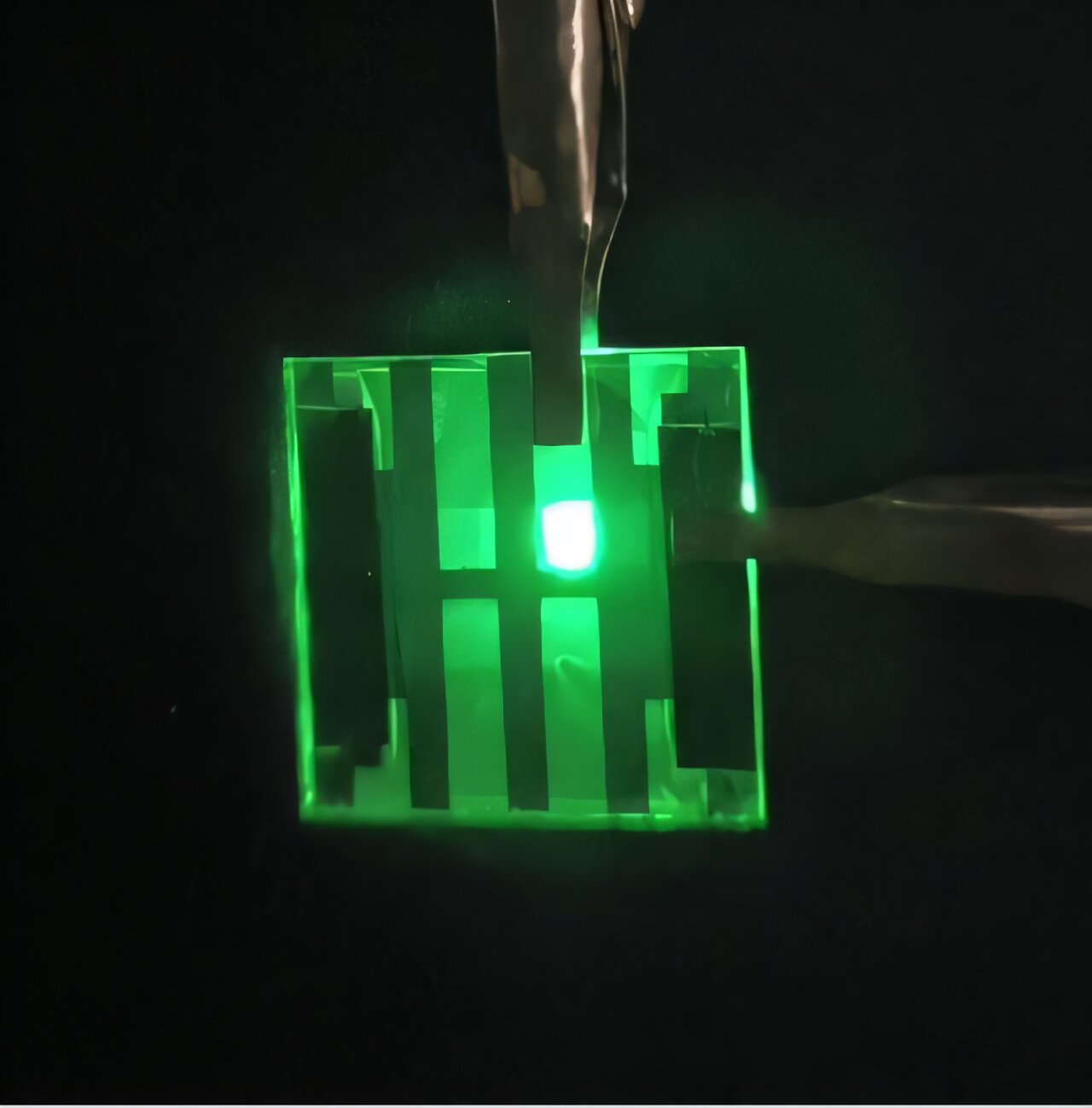Key Takeaways
- Researchers developed a paper-thin LED using quantum dots, providing a warm, sun-like glow.
- This innovation aims to improve indoor lighting, enhancing sleep patterns and eye health.
- The LEDs can achieve maximum brightness at low voltages, suitable for screens and adaptive lighting applications.
Innovative Thin LEDs Mimic Natural Light
Researchers have introduced a groundbreaking paper-thin LED that emits a warm, sun-like glow, as detailed in ACS Applied Materials & Interfaces. This development promises to revolutionize lighting for next-generation devices such as phones, computers, and adaptive indoor lighting systems. The focus is on creating a more natural atmosphere in indoor settings, potentially alleviating disruptions to users’ sleep patterns.
The study, led by Xianghua Wang, emphasizes the feasibility of ultra-thin, large-area quantum dot LEDs that replicate the solar spectrum closely. “These devices could enable next-generation eye-friendly displays, adaptive indoor lighting, and even wavelength-tunable sources for horticulture or well-being applications,” Wang noted.
In their quest for natural-looking indoor lighting, previous efforts utilized flexible LEDs with red and yellow phosphorescent dyes to simulate a candle-like effect. However, these designs fell short in meeting the full spectrum of sunlight, particularly in yellow and green wavelengths. To address this gap, Lei Chen and colleagues focused on developing quantum dots that would achieve a vivid, natural glow when integrated into a thin white quantum dot LED (QLED).
The research team synthesized red, yellow-green, and blue quantum dots encapsulated in zinc-sulfur shells, identifying an optimal color ratio to produce an emission spectrum akin to sunlight. The team constructed the QLED on an indium tin oxide glass substrate, layering electrically conductive polymers, the quantum dot mixture, metal oxide particles, and final layers of aluminum or silver. The resulting quantum-dot layer is incredibly thin, measuring only tens of nanometers in thickness, akin to wallpaper.
Initial tests revealed that the thin QLED excelled under an 11.5-volt power supply, emitting a bright, warm white light with enhanced red wavelengths—beneficial for sleep and eye health. The color rendering index for illuminated objects exceeded 92%, ensuring that they appeared close to their actual colors.
Further experiments produced 26 versions of the white QLED, varying the electrically conductive materials to optimize operating voltage. Remarkably, these designs required only 8 volts to achieve maximum brightness, with around 80% of the devices surpassing the luminosity necessary for computer monitor use.
This advancement in LED technology is poised to enhance not only indoor lighting but also the visual experience in various applications, marking a significant step forward in the quest for efficient and eye-friendly illumination solutions.
The content above is a summary. For more details, see the source article.















